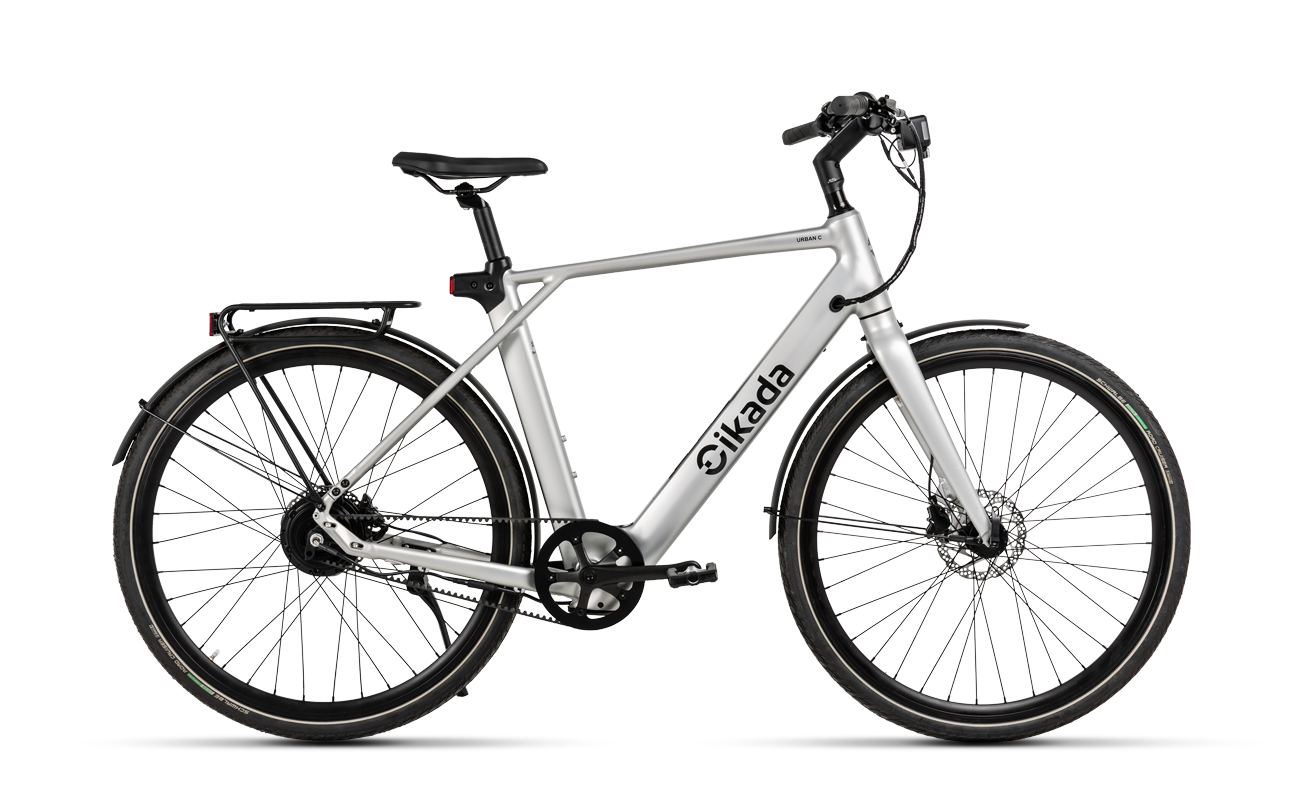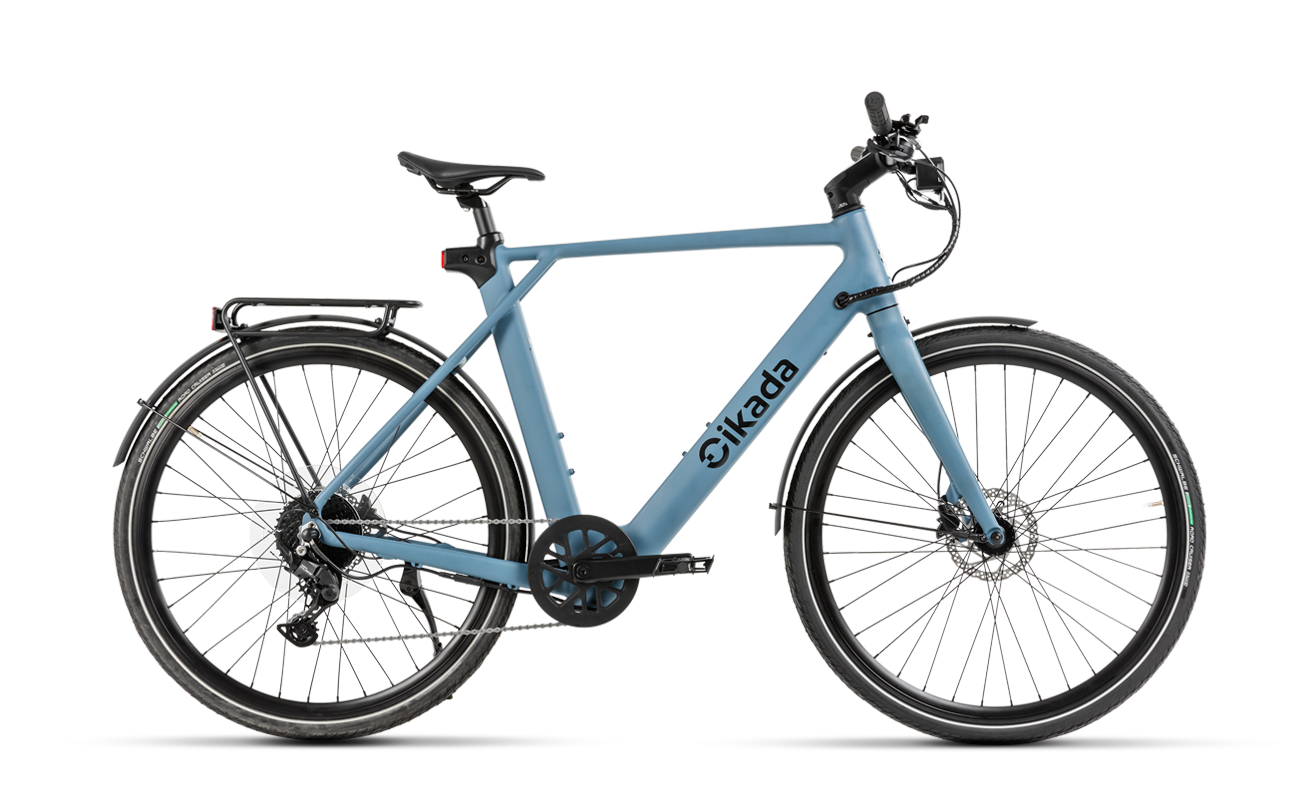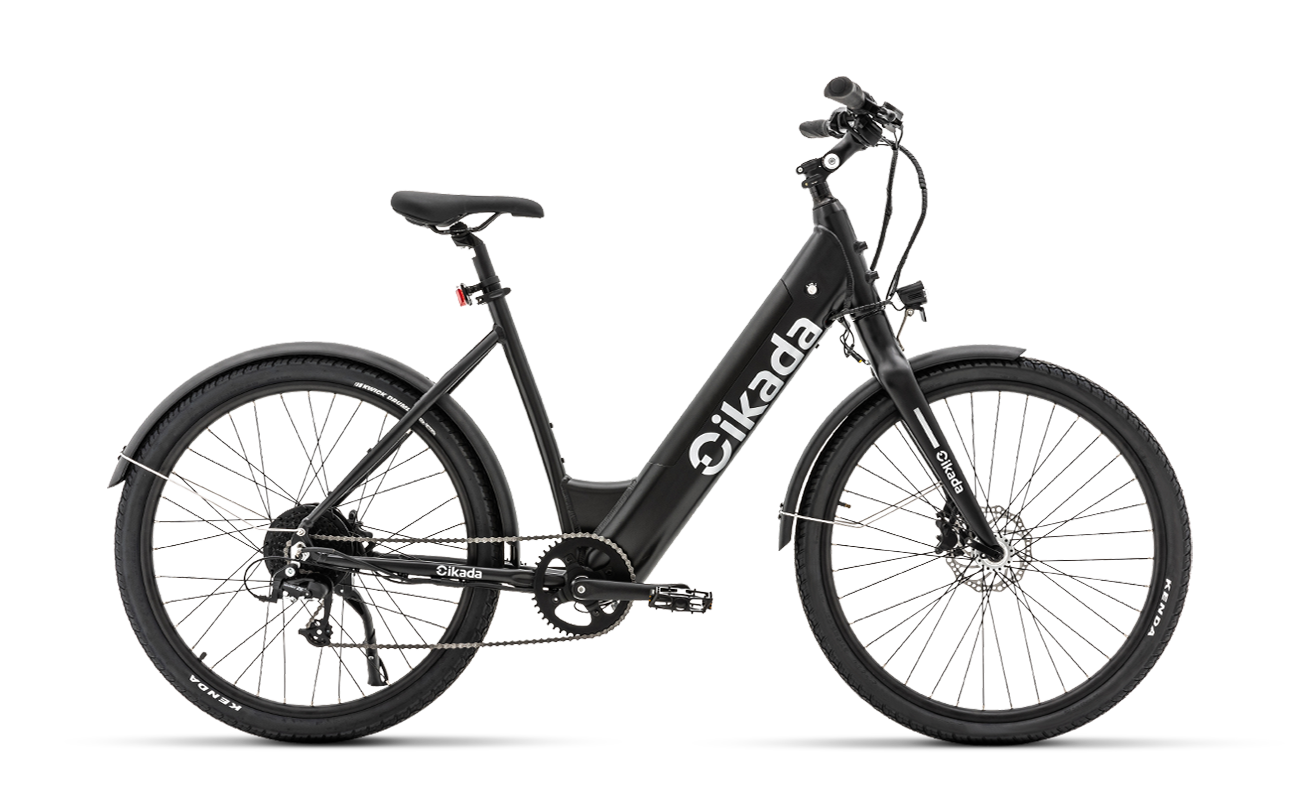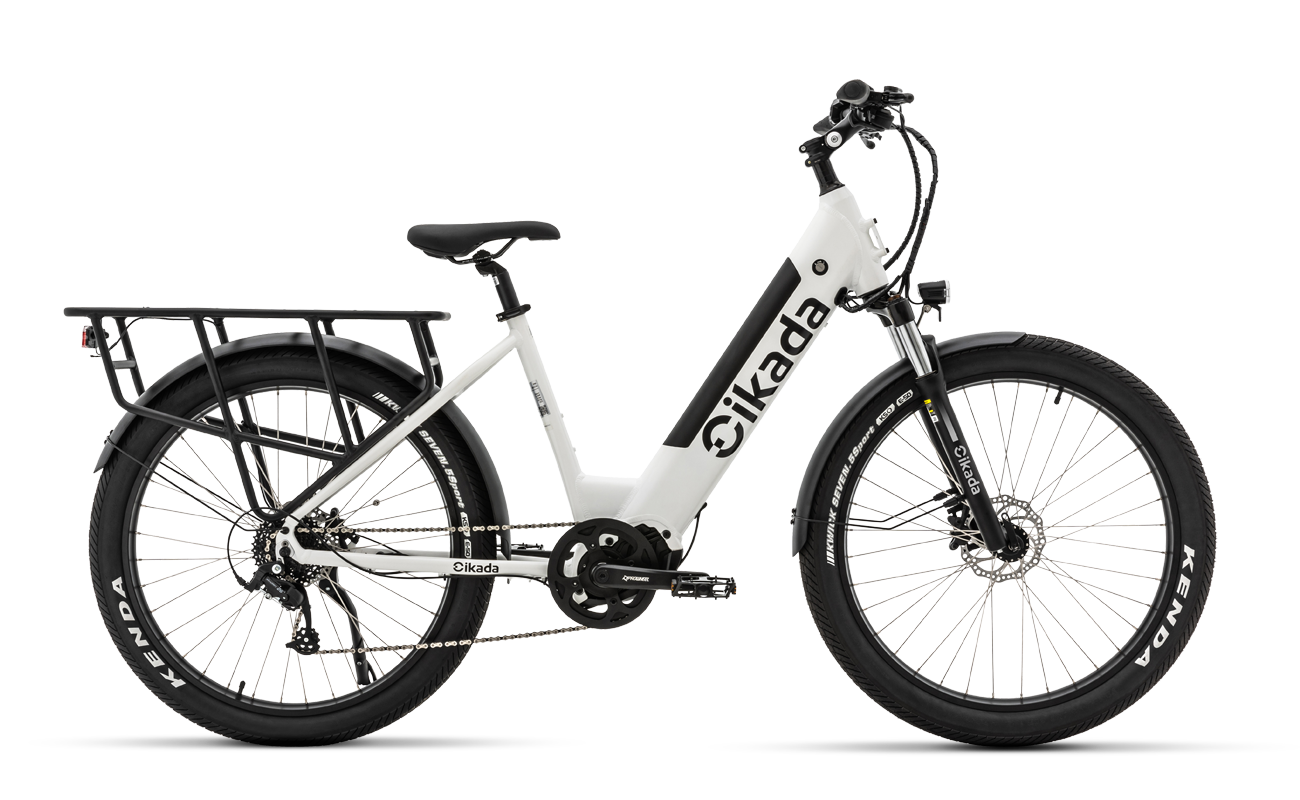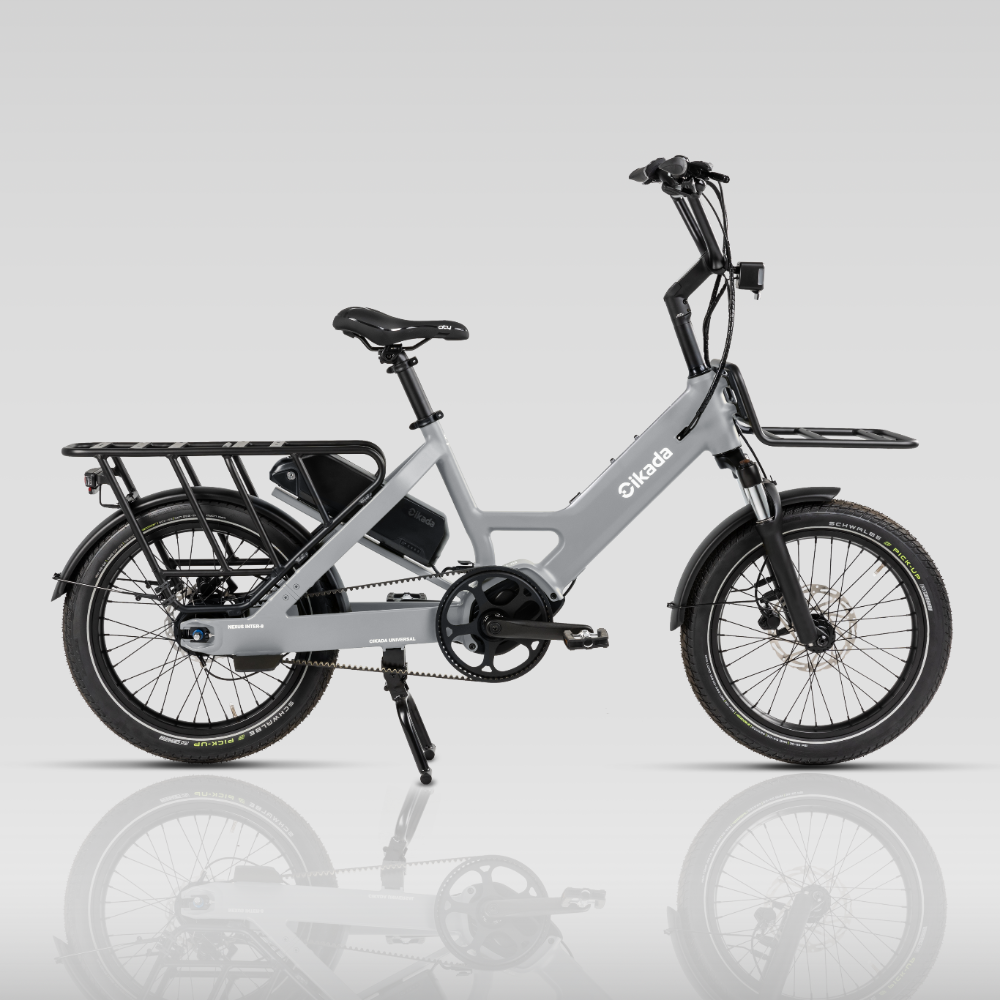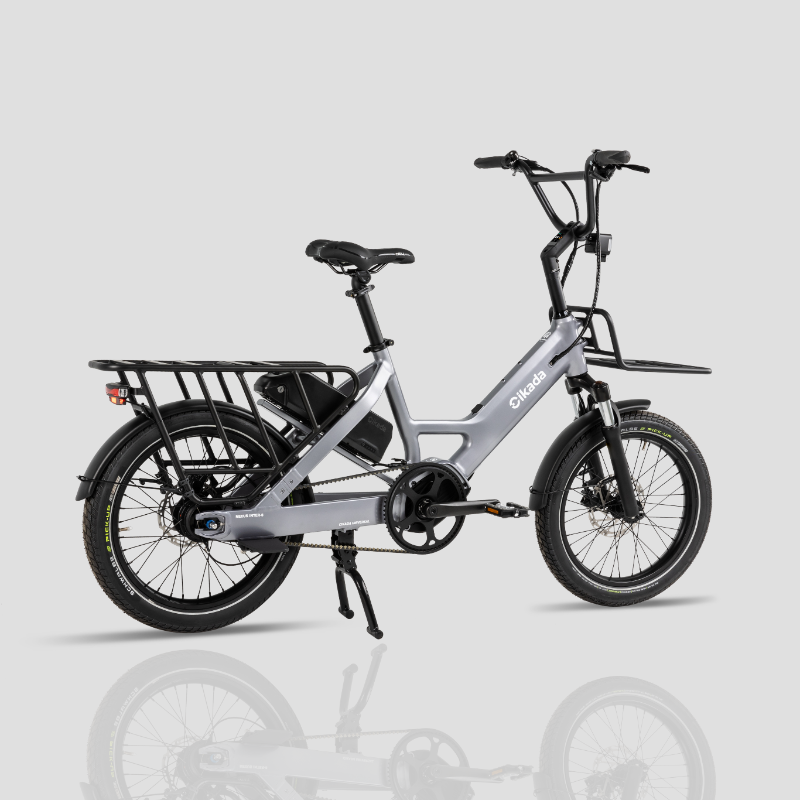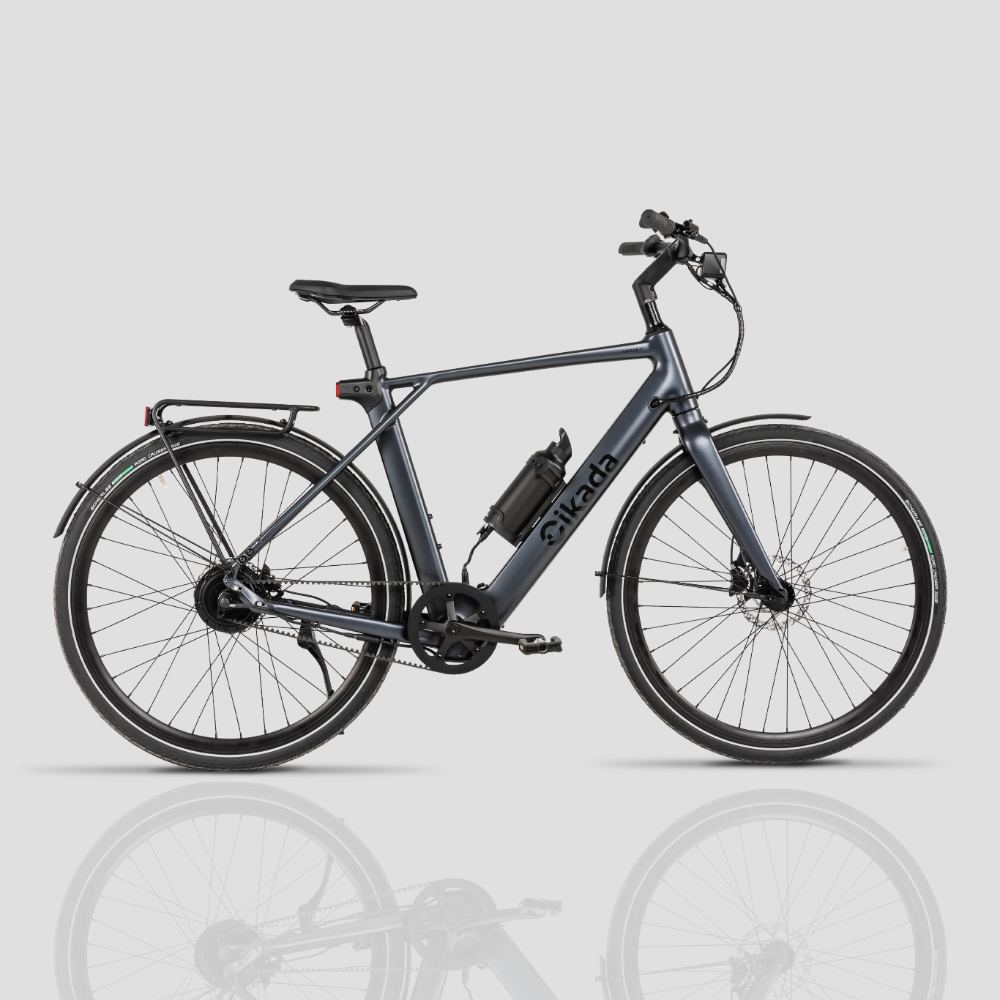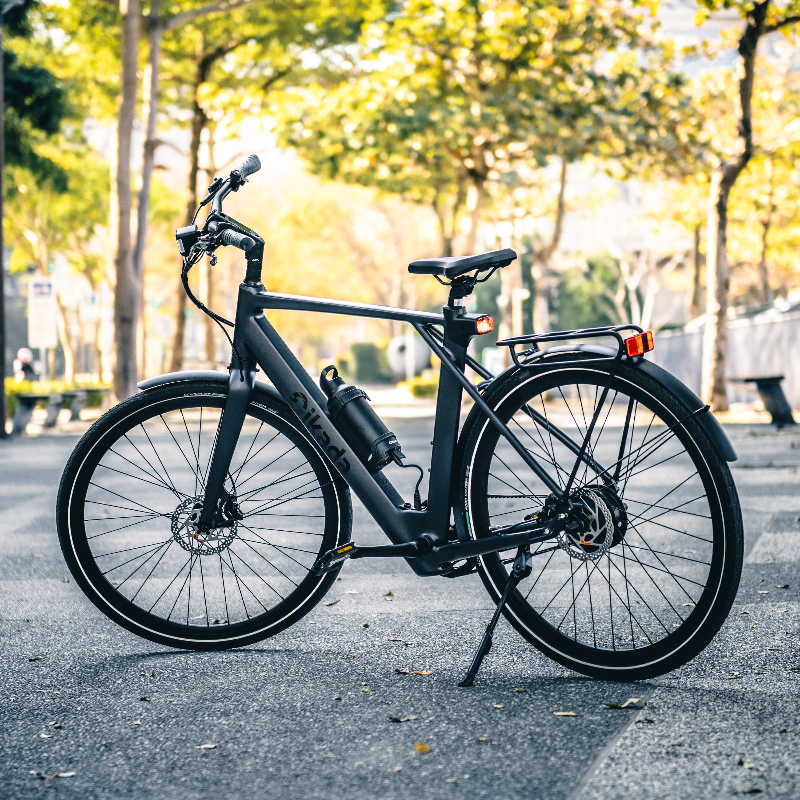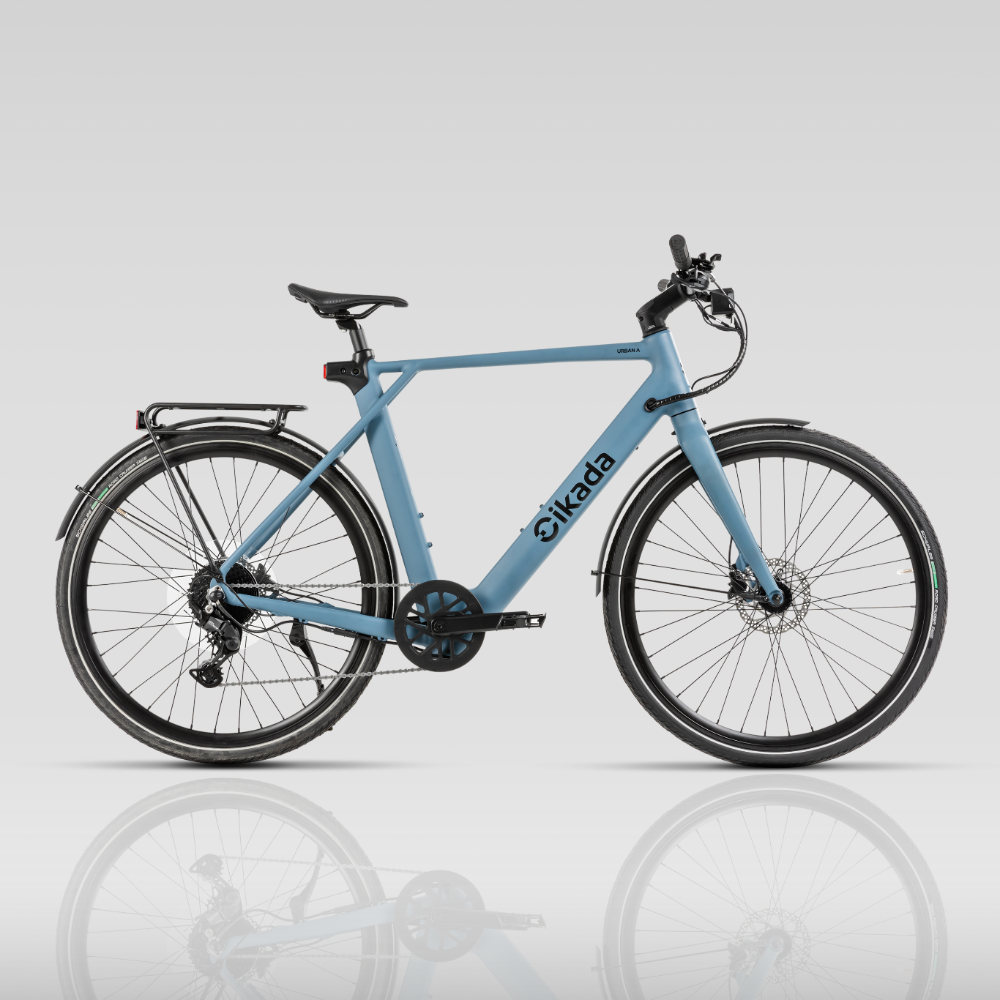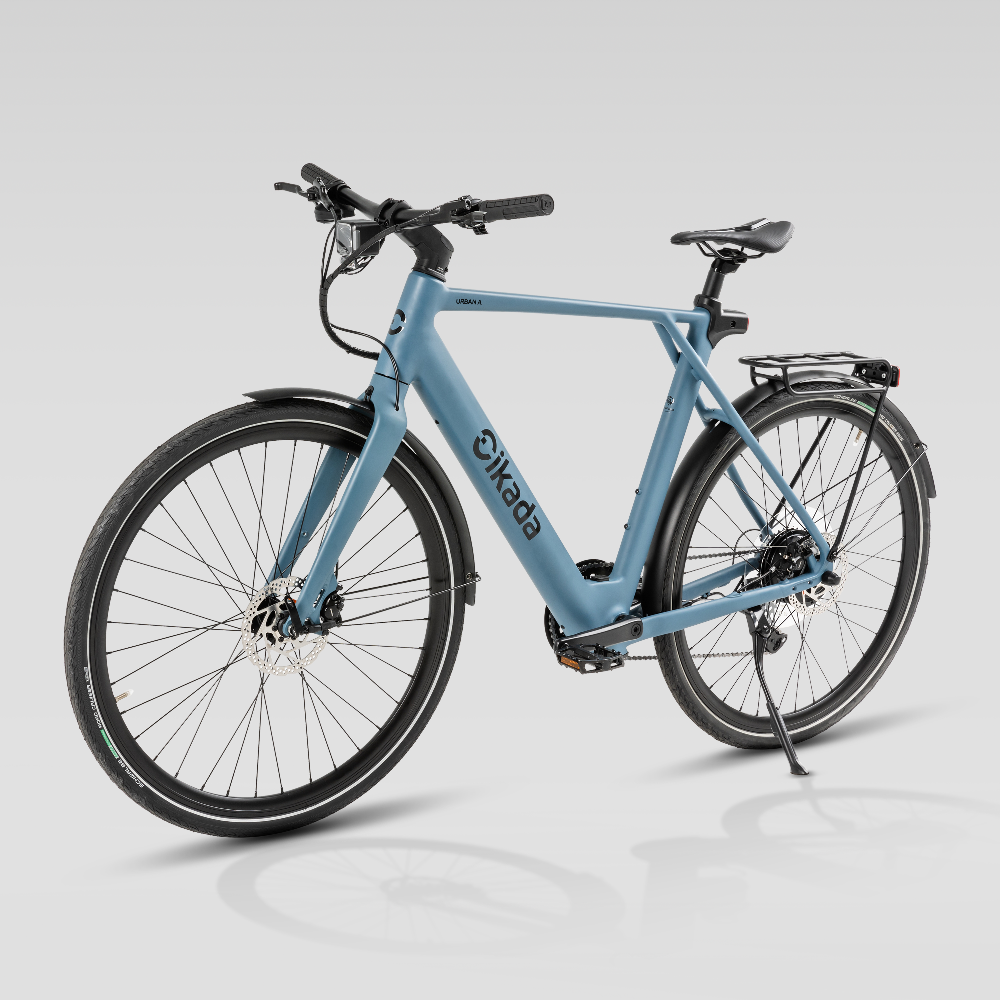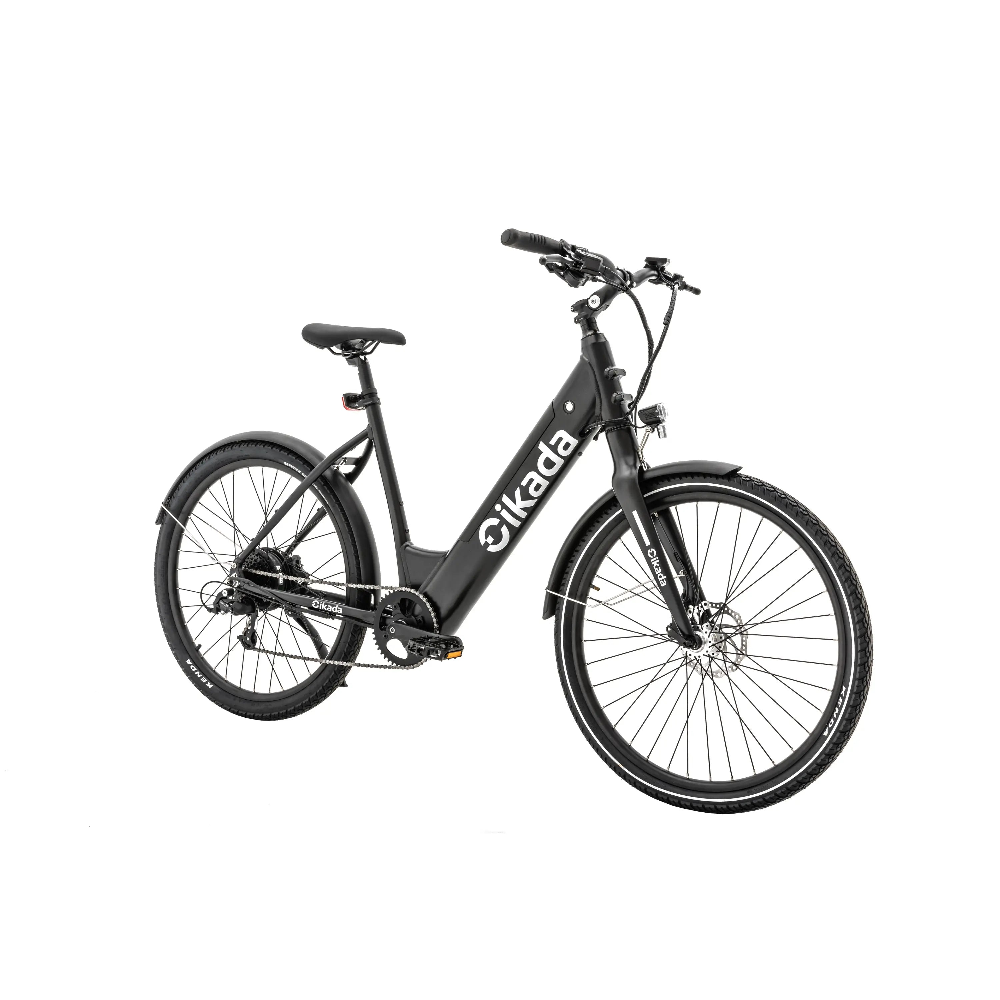Pedal Assist vs. Traditional Biking: Key Differences
Biking has long been a popular mode of transportation and exercise. It's a simple, cost-effective way to get around, and it's great for your health.
But what if there was a way to make biking even better? Enter pedal assist technology.
Pedal assist, also known as e-biking, is revolutionizing the cycling world. It combines the benefits of traditional biking with the convenience of motorized assistance.
This article will delve into the key differences between pedal assist and traditional biking. We'll explore the benefits, use cases, and considerations for each type.
We'll also introduce you to some specific models, like the Cikada pedal assist ebikes. These examples will give you a clear idea of what's available in the market.
So, whether you're a cycling enthusiast or considering buying a bike, this article is for you. Let's dive in.
Understanding Pedal Assist Technology
Pedal assist technology represents a significant leap in cycling innovation. It integrates an electric motor to aid pedaling effort. This system not only enhances speed but also reduces fatigue on longer rides.
Typically, pedal assist bikes have sensors to monitor your effort. These sensors adjust the level of motor support provided. This harmony between human and machine creates a seamless riding experience.
The technology can dramatically improve commuting. Riders can effortlessly conquer long distances or hills. Commuting becomes not just easier but also more enjoyable.
Pedal assist technology offers a range of advantages:
-
Reduces physical exertion
-
Extends travel range
-
Enhances riding comfort
Overall, it makes cycling more accessible to broader audiences. This includes those who might shy away due to fitness levels or physical limitations.
How Pedal Assist Works
At its core, pedal assist employs electric motors to enhance pedaling power. When you pedal, sensors detect this movement. They signal the motor to kick in and provide additional force.
This motor power varies based on your speed, terrain, and chosen settings. You can often switch between different levels of assistance. This flexibility allows you to tailor the ride to your needs.
Some systems use a torque sensor. This measures the force applied to the pedals. More force means more motor assistance, creating a natural cycling experience.
Other bikes use cadence sensors. These detect pedaling speed and adjust motor output accordingly. Both systems ensure you have support without replacing your pedaling effort entirely.
The Evolution of Pedal Assist Systems
Pedal assist technology has evolved considerably over the years. Initially, early models were heavy and cumbersome. They often required frequent charging and provided limited range.
Thanks to technological advances, modern e-bikes are efficient and lightweight. Battery improvements have extended both range and lifespan significantly.
Today's models often feature sleek, integrated designs. Motors and batteries are nearly invisible, maintaining traditional bike aesthetics. They're not just functional but also stylish, appealing to modern riders.
Software advancements are noteworthy too. Many e-bikes now come equipped with smart systems. These allow riders to customize settings and track performance through apps. Such features demonstrate just how far pedal assist technology has come.
The Benefits of Pedal Assist Biking
Pedal assist bikes offer numerous benefits that cater to diverse riders. They are designed to enhance the biking experience in various ways. These advantages extend beyond mere convenience.
One of the primary benefits is improved health and fitness. Pedal assist allows for customizable exercise intensity. Riders can choose the level of effort that suits their fitness goals.
Environmental impact is another crucial advantage. E-bikes significantly reduce the carbon footprint compared to cars. This makes them a more sustainable mode of transportation.
The accessibility of pedal assist bikes is commendable. They cater to all ages and fitness levels. More people can now enjoy the joys of cycling, regardless of physical ability.
Listed benefits include:
-
Improved cardiovascular health
-
Reduced environmental impact
-
Enhanced accessibility for diverse riders
Pedal assist bikes also offer practical transportation solutions. They provide an effective alternative to traditional commuting methods. For many, this means less reliance on cars for short trips.
Finally, the ease of use cannot be overstated. With user-friendly interfaces and adjustable settings, pedal assist bikes are simple to operate. This makes them an attractive option for both novice and seasoned cyclists alike.
Health and Fitness Advantages
Pedal assist bikes promote active lifestyles while minimizing strain. Cyclists can enjoy longer rides without over-exerting themselves. This makes them ideal for those new to fitness or returning after a hiatus.
The adjustable motor support enables controlled exercise intensity. Riders can decide when they want to push harder or relax. This flexibility is particularly appealing for daily commutes or leisurely weekend rides.
Incorporating e-bikes into a workout routine can be highly beneficial. They provide an excellent way to maintain cardiovascular health. Cycling outdoors also offers the added benefit of being in a natural environment, which can improve mental well-being.
Environmental Impact and Sustainability
Pedal assist bikes are champions of sustainable transportation. They produce zero emissions during rides, which benefits the environment significantly. Replacing car trips with e-bike commutes reduces the overall carbon footprint.
Cities are increasingly recognizing the value of e-bikes. Urban planners see them as a solution to traffic congestion. As more people choose e-bikes, the reduction in vehicle traffic enhances urban air quality.
Additionally, e-bikes can complement public transportation networks. They provide a viable option for the "last mile" of commutes. This integration with existing systems can further reduce the reliance on motor vehicles.
Accessibility and Ease of Use
Pedal assist bikes open the world of cycling to more people. They require less physical effort, making them suitable for all fitness levels. This inclusivity helps people who might otherwise not consider biking as a viable option.
The user-friendly nature of e-bikes adds to their appeal. Most models come with intuitive controls for easy operation. Riders can quickly switch assistance levels to suit different terrains and preferences.
Moreover, pedal assist bikes can help people with mobility issues. They provide an opportunity to experience the joy of cycling without the physical demands of traditional bikes. This accessibility can lead to increased independence and freedom in transportation.
Traditional Biking: The Classic Experience
Traditional biking embodies the timeless appeal of simple, human-powered travel. This mode of transport has been cherished for its straightforward mechanics and pure form of exercise. Riders find joy in pedaling unaided, relying solely on their strength and stamina.
The experience is deeply rooted in self-reliance and achievement. Cyclists hone their skills through personal progress and perseverance. Every ride presents an opportunity to push limits and foster resilience.
Traditional biking offers an unparalleled connection to the journey itself. Feel the terrain beneath the wheels; absorb the sounds of nature. These elements create a meditative experience not easily replicated by pedal assist counterparts.
For many, traditional biking is a lifestyle choice that goes beyond fitness. It's about embracing simplicity, valuing the journey, and savoring every mile. The satisfaction derived from powered solely by one's own energy is immensely rewarding, enriching both mind and body.
Physical Exertion and Exercise Intensity
Traditional biking demands consistent effort, encouraging full-body engagement. It requires cyclists to use their muscle groups continuously, enhancing endurance. The intrinsic challenge fosters increased heart rates, building robust cardiovascular health.
Each uphill struggle or long-distance ride tests strength and stamina. These demands make traditional biking a profound workout. Cyclists develop enhanced flexibility, coordination, and balance.
Biking without assistance allows for greater control over exercise intensity. Riders can vary speed and resistance naturally, customizing workouts. This variability provides endless opportunities to adapt sessions to personal fitness objectives.
Connection with the Outdoors and Community
Traditional biking fosters a profound link with the natural world. Cyclists traverse diverse landscapes, awakening senses to fresh air and varied terrains. These experiences nurture a deeper appreciation for nature’s beauty.
Communities often form around shared cycling routes and challenges. Cycling groups unite people through a shared passion for exploration. These social networks offer support, motivation, and camaraderie.
Moreover, participation in cycling events and races builds community ties. Whether competitive or recreational, these activities amplify collective enthusiasm. Together, cyclists inspire each other and cultivate a culture of inclusivity and support.
Comparing Pedal Assist and Traditional Bikes
Pedal assist bikes introduce an element of innovation to the cycling world. They merge technology with physical effort, offering a unique riding experience. Traditional bikes, however, rely purely on the rider's own power.
Both types cater to different biking preferences and needs. Pedal assist bikes provide an added boost, making them suitable for longer journeys. Traditional bikes are favored by those seeking a more intense workout.
Key differences between pedal assist and traditional bikes include:
-
Power Source: Traditional bikes rely solely on muscle power, while pedal assist bikes use electric motors.
-
Speed Capabilities: Pedal assist bikes can achieve higher speeds with less effort.
-
Fitness Impact: Traditional bikes require more physical exertion.
-
Cost: Pedal assist bikes often require a larger initial investment.
-
Maintenance Needs: Both types require care, but pedal assist bikes involve more complex systems.
Choosing between the two often depends on the rider's lifestyle and goals. Those aiming for a rigorous workout might opt for traditional bikes. Conversely, commuters might prefer the ease of pedal assist.
Exploring personal preferences through test rides can aid in decision-making. Feeling the distinct aspects of each can solidify the choice. This hands-on approach helps determine which aligns with individual needs and values.
Performance and Speed
Pedal assist bikes typically outperform traditional bikes in terms of speed. Their electric motors grant additional power, allowing riders to maintain faster paces with less effort. This can be particularly advantageous on hilly terrains.
Many pedal assist bikes include adjustable settings for speed assistance. Riders can choose between various power modes to suit different conditions. This adaptability enhances the overall riding experience.
However, traditional bikes offer unparalleled control over speed through direct pedal power. Cyclists may find satisfaction in manually pushing limits and managing pace. This control can be crucial for those who relish the challenge of varied terrains.
Cost and Long-Term Value
Pedal assist bikes often come with a higher initial cost compared to traditional bikes. The inclusion of advanced technology like motors and batteries increases manufacturing expenses. However, this initial investment can yield savings over time.
Owners of pedal assist bikes might experience lower transportation costs. These bikes can replace car commutes, reducing fuel and parking expenses. Additionally, governments may offer incentives or subsidies for eco-friendly transportation.
On the other hand, traditional bikes generally have lower purchase and maintenance costs. They lack complex electronic systems, which can alleviate long-term financial commitments. This simplicity makes them an attractive option for budget-conscious cyclists.
Maintenance and Care
Both pedal assist and traditional bikes require regular maintenance to ensure optimal performance. Routine checks, such as tire pressure and brake adjustments, are essential for both. However, pedal assist bikes involve more intricate electrical components.
Caring for pedal assist bikes often means addressing battery health and motor functions. Keeping these systems in peak condition is vital to their longevity. This necessitates regular inspections from skilled technicians.
Traditional bikes benefit from straightforward mechanical upkeep. Cyclists can often perform basic repairs and adjustments themselves. The absence of electrical systems simplifies the maintenance process, making it more accessible to the average rider.
Spotlight on Cikada Pedal Assist eBikes
Cikada pedal assist eBikes are known for blending style with functionality. They offer models tailored to both urban and adventurous riders. Cikada bikes make riding efficient and enjoyable, thanks to their high-tech features.
These bikes incorporate advanced pedal assist technology, enhancing travel across varying terrains. With powerful motors and lasting batteries, Cikada eBikes cater to diverse biking needs. Their design ensures comfort without compromising performance.
Moreover, Cikada eBikes come with user-friendly controls. Riders can seamlessly adjust settings to suit their pace and journey. This adaptability sets them apart in the competitive eBike market.
Cikada provides diverse options, ensuring there's a bike for every lifestyle. The Cikada Touring eBike suits those yearning for adventure. Meanwhile, the Cikada City eBike is ideal for navigating bustling urban landscapes.
Cikada Touring eBike: Built for Adventure
The Cikada Touring eBike is designed for explorers at heart. It features a robust build that can withstand challenging trails. This bike is perfect for those who love long-distance riding.
Equipped with a powerful motor, it tackles steep hills with ease. Riders can enjoy nature's beauty without worrying about fatigue. Its battery offers extended range, allowing for uninterrupted adventures.
The bike's ergonomic design ensures rider comfort on extended journeys. It includes suspension features to smoothly handle rough terrains. Whether traversing countryside routes or mountainous trails, this bike delivers reliability and thrill.
Cikada City eBike: The Urban Commuter's Choice
For city dwellers, the Cikada City eBike is a game-changer. It's crafted to make urban commuting swift and seamless. Navigating traffic and narrow streets becomes effortless with this model.
This eBike boasts a step-through frame, perfect for crowded environments. Its lightweight design allows for easy maneuverability, whether you're rushing to work or just cruising downtown. Plus, its sleek appearance adds a touch of modernity to your daily rides.
The City eBike's efficient motor aids in zipping through congested areas. It saves time, offering faster, eco-friendly transit across cityscapes. Riders can confidently tackle daily commutes while reducing their carbon footprint.
Legal Considerations and Safety Features
Understanding legal considerations for pedal assist bikes is crucial for safe riding. Laws regarding eBikes can vary widely by region. Knowing local regulations helps prevent potential legal issues.
It's essential to consider safety features when selecting a pedal assist bike. These features not only enhance safety but also improve riding experience. Reliable brakes and bright lights are must-haves for safe commuting.
Familiarity with safety guidelines ensures a confident and secure ride. Riders should equip themselves with proper gear, like helmets and reflective clothing. Taking these steps minimizes risks on the road.
Regulations and Compliance
eBike regulations differ significantly across jurisdictions. Some regions have specific speed limits for pedal assist bikes. Ensuring compliance with these rules is necessary to avoid fines.
In many places, eBikes are classified based on motor power and speed. This classification influences where bikes can legally be ridden. Understanding these distinctions can prevent legal misunderstandings.
Staying informed about legal requirements is part of responsible biking. Riders should regularly check for updates in regulations. This proactive approach helps maintain compliance and ensures a worry-free ride.
Safety on the Road
Safety on the road starts with awareness and preparation. Riders should always signal turns and be visible to other traffic participants. This practice reduces accidents and improves road interactions.
Installing safety features on a pedal assist bike is vital. Bright head and tail lights improve visibility, especially in low light conditions. Reflective strips and mirrors further enhance safety.
Regular maintenance ensures a pedal assist bike is in top condition. Checking brakes and tire pressure frequently is crucial for safety. A well-maintained bike performs better, providing a smoother and safer ride.
The Future of Biking: Pedal Assist's Role
Pedal assist technology is poised to redefine biking in the coming years. As cities grow, the need for efficient transport increases. Pedal assist bikes offer a viable, eco-friendly solution.
The integration of eBikes into urban planning is crucial. They help decongest traffic and reduce pollution significantly. This shift fosters healthier and more sustainable city living.
Moreover, pedal assist bikes are becoming more accessible to a broader range of people. Innovations in design and technology make them easier to use. Consequently, they are attracting non-traditional cyclists, fueling interest and uptake.
Pedal assist will likely play a key role in future transportation strategies. Its potential to complement public transit systems is immense. This makes pedal assist a cornerstone of forward-thinking mobility solutions.
Urban Transportation and Smart Cities
Pedal assist bikes are a natural fit for smart city concepts. Their low emissions align perfectly with sustainability goals. They offer a practical alternative to congested roads and limited parking.
Incorporating eBikes into public transport networks is a growing trend. This facilitates seamless, multimodal travel options for urban dwellers. It also supports efficient last-mile connectivity, crucial in sprawling cities.
Urban infrastructure is evolving to accommodate eBikes better. Dedicated lanes and charging stations enhance the biking experience. These changes will likely accelerate the adoption of pedal assist bikes in cities worldwide.
Advancements in Cycling Technology
Technological advancements are rapidly transforming pedal assist bikes. Lighter materials and innovative motors are enhancing bike performance. Riders enjoy longer battery life and greater efficiencies as a result.
Smart technology integration is another exciting development. Features like GPS navigation and ride tracking elevate the cycling experience. Riders can now interact with their bikes in intuitive and useful ways.
Future innovations may further enhance these capabilities. Continuous improvements in battery technology promise even more range. As these advancements unfold, pedal assist bikes will remain at the forefront of cycling innovation.
Conclusion: Choosing the Right Bike for You
Deciding between pedal assist and traditional bikes depends on your lifestyle and needs. Consider how often you ride and why you want a bike. This will guide your choice, ensuring the bike you pick aligns with your goals.
For those seeking convenience and ease, pedal assist offers much appeal. It suits a broad audience, from commuters to those with mobility challenges. The tech-savvy features and reduced physical demand are particularly compelling.
On the other hand, if you treasure simplicity and workout benefits, traditional biking stands out. It provides an unparalleled connection to nature and fitness. Evaluate both options, and prioritize what elements matter most to you as a rider.


